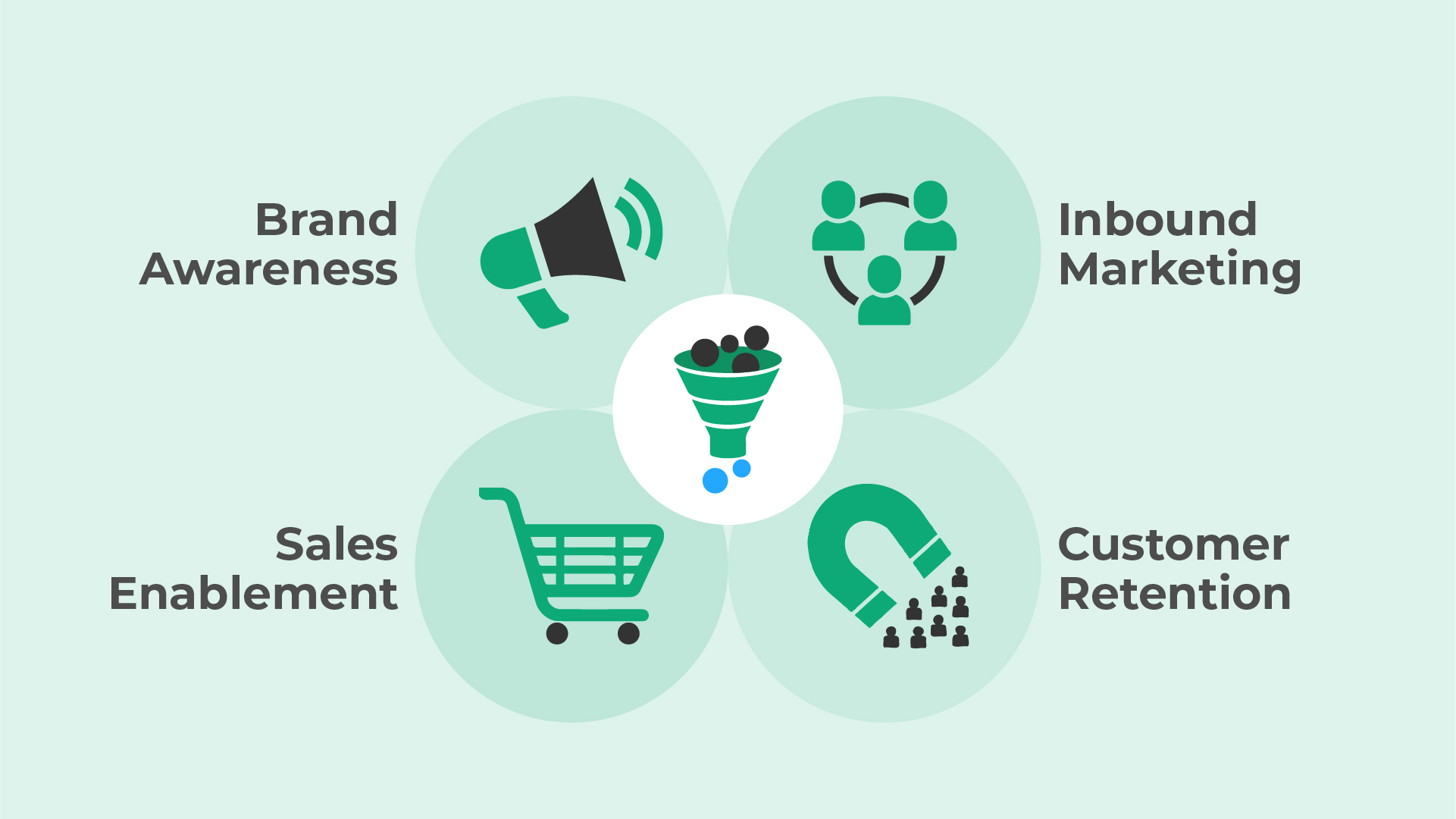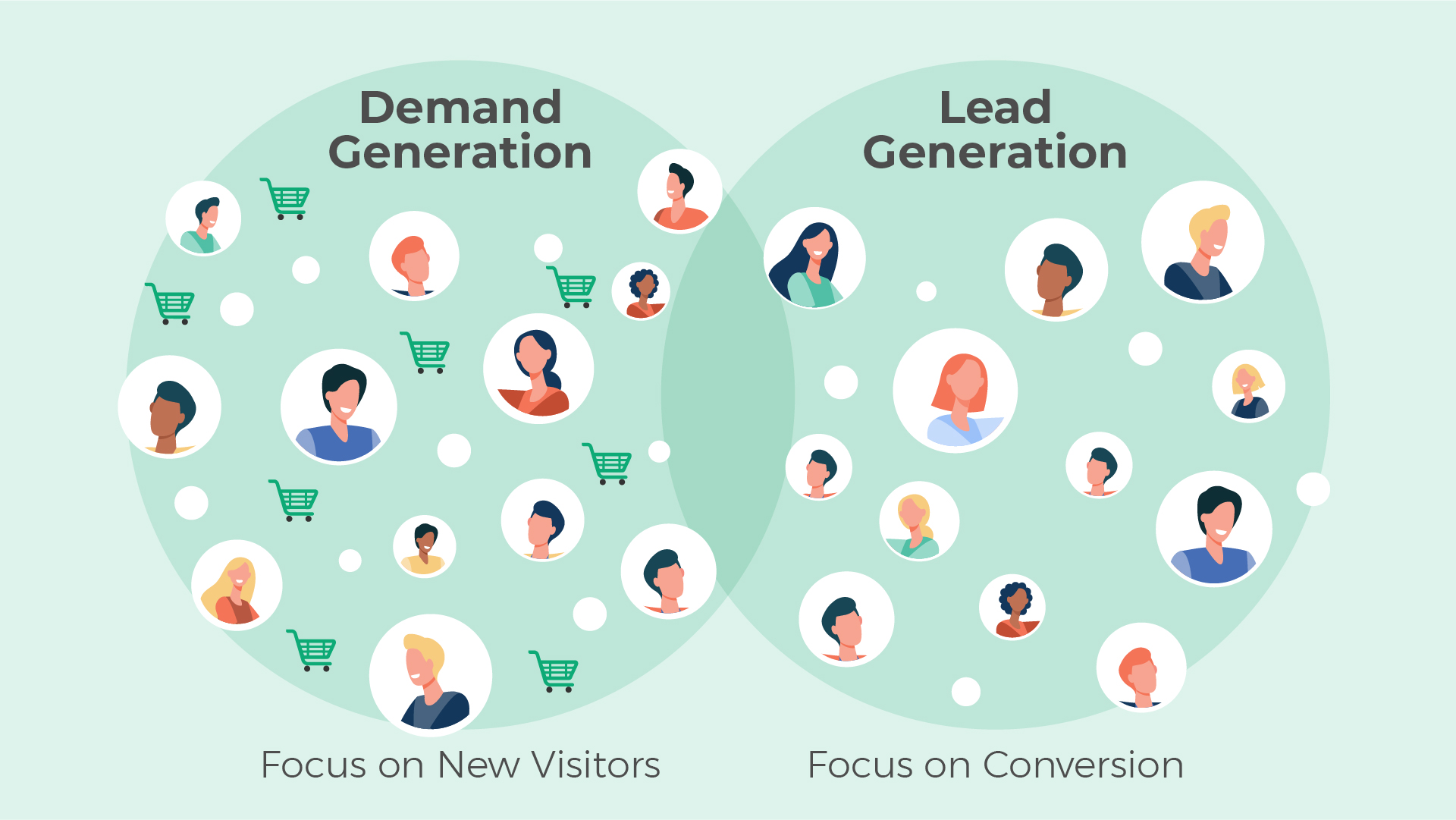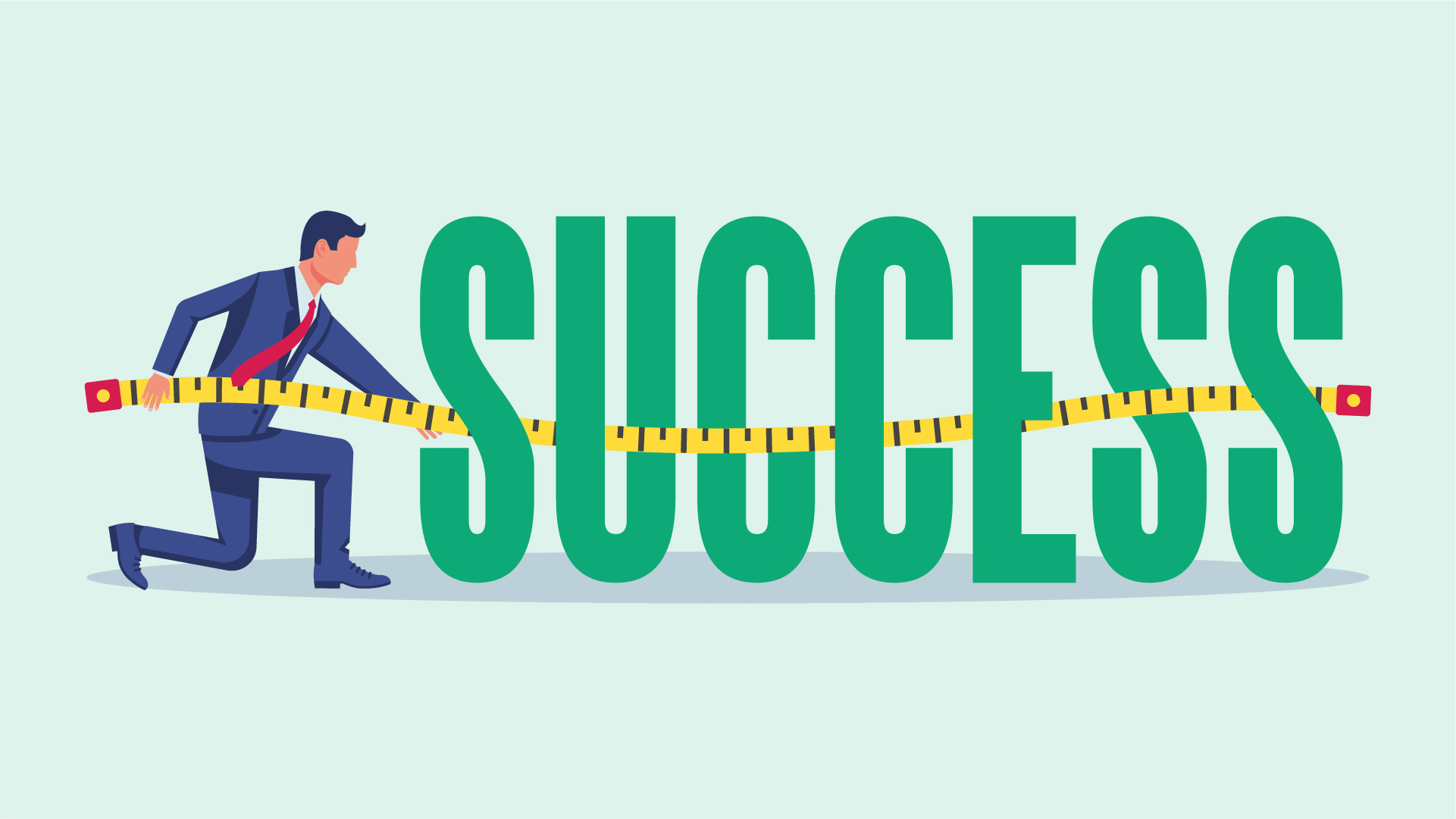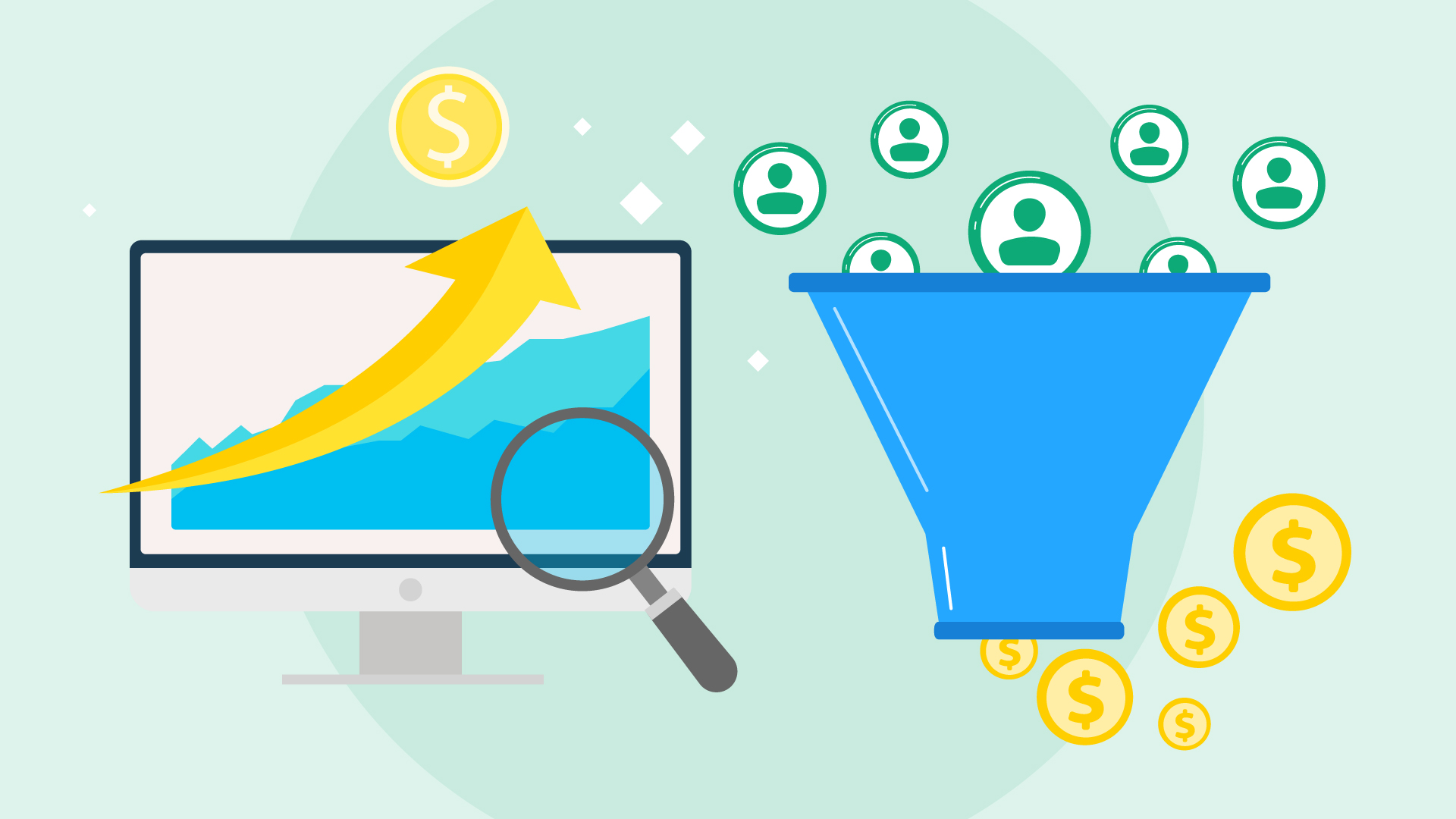As a marketer, you come to realize that even SEO and visits aren’t enough to convert leads into customers. Demand generation marketing builds brand awareness by increasing website traffic. This is typically achieved through inbound marketing during the customer journey. It’s focused on revenue creation and usually involves an integrated tech stack.
Demand generation marketing has many other benefits, too. It provides marketers with the ability to track the way their efforts contribute to revenue and assists in removing the silos that often exist between sales and marketing teams.
What Does Demand Generation Look Like in Practice?

Demand generation aims to touch every step of the customer’s journey. Its strategies are often broken into four components: brand awareness, inbound marketing, sales enablement, and customer retention.
Brand Awareness
The best demand-generation strategies start with brand awareness, so that prospective customers and contacts recognize your brand when they see it. This stage may include::
- Identifying and outlining the personas of the customer you’d like to reach and the pain points your solution can address;
- Establishing thought leadership by speaking at events or publishing important opinion pieces in the media;
- Leveraging social media platforms to strengthen brand recall;
- Maintaining public relations;
- Creating a go-to-market strategy, which includes studying the needs of your target audience as a starting point.
Inbound Marketing
It’s easy to think demand generation marketing and inbound marketing are the same, but their relationship is more parent/child. Inbound marketing is one of the components of demand generation, which in turn is part of a company’s overall marketing strategy.
Inbound marketing is used to convert and nurture qualified leads through marketing and sales initiatives, such as:
- SEO and blogging that attracts prospects to your website;
- Paid advertising, such as targeted ad campaigns;
- Gated content marketing, including e-books, guides, and white papers that visitors can access by completing form submissions on your website;
- Lead gen tactics, including landing pages with forms, chatbots that capture customer information, and other channels;
- Email marketing and web conversion rate optimization.
Sales Enablement
Sales enablement provides your sales teams with the resources they need to close more deals. Sales enablement may include:
- Testimonials and social evidence that boost customers’ confidence in your company;
- Case studies that provide insight into the quality of the work you have done;
- Fact sheets and FAQs that support your sales team and cover any questions they may encounter in the field;
- Estimate and discount calculators that can demonstrate the benefits customers will realize if they adopt your product/solution.
Customer Retention
Creating demand and acquiring customers is always important, but retaining your existing customers is essential. Providing excellent customer service and exceeding expectations go a long way toward securing paying customers in the long run. Some customer retention methods to explore include:
- Improving customer experiences through discounts and customer service hubs;
- Using a knowledge base that shares information about your product that will help customers realize the value of your business;
- Deploying a ticketing system to resolve issues that may arise quickly;
- Showing your customers your appreciation through acknowledgment and events;
- Generating upsells and renewals;
- Encouraging your customers to provide feedback and making iterations accordingly;
- Keeping a close eye on metrics like your Net Promoter Score to determine how loyal your customers are and how you can improve.
Demand Generation vs. Lead Generation

Demand generation is often confused with lead generation because the two concepts are interrelated. Demand generation tries to grow your audience by bringing new visitors, while lead generation efforts are designed to convert your audience into qualified leads. So, in practice, demand generation feeds into lead generation. Your company needs to build awareness and generate interest first because not every customer is ready to convert immediately.
Prospects may not be ready to speak to a sales rep just yet, but they might watch videos or read blog posts that build trust and awareness. When the prospect is ready to make a purchase, those interactions will form part of their consideration set. Lead generation is more focused on qualifying and converting prospects than demand generation, and a solid marketing strategy doesn’t include one without the other.
Measuring the Success of Your Demand Generation Efforts

Demand generation is only as effective as the revenue it can generate and the extent to which it can deliver a pipeline of potential customers. Effective demand-generation strategies require aligning technologies, stakeholders, and business processes that can fuel growth. This comprises technical implementation and integration which enables a frictionless experience for your potential customers. Unified data between systems, reporting, and analysis also helps identify gaps in your pipeline or funnel.
The most common demand generation metrics include:
- Cost per acquisition, which determines the average cost of winning a customer;
- Customer lifetime value is the average value one customer will bring to the company for the entire duration they’re a customer;
- Demand gen cycle length, which measures the average time from identifying a lead to turning them into a customer. The goal should be to shorten this as much as possible.
Conclusion
Demand generation starts with optimization, which is fueled by effective cross-channel analysis and effective reporting. Without the right data and insight at your disposal, it’s difficult to determine how effective your marketing strategies are and how large the revenue contribution attributed to marketing is.
Implementing an ERP solution that provides real-time, transparent insights into your inventory, customers, and vendors can help identify where marketing strategies can provide the most “bang for the buck.” Come check out 10X ERP and how we’re modernizing and reinventing the distribution ERP space.
